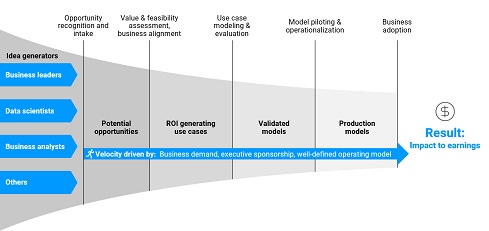Some of the keys to success with an AI implementation may seem basic, but they really can make a difference.


Image: Denisismagilov - stock.adobe.com
Another day, another AI fail. Dismal project success rates between 10% to 50% continue to plague countless artificial intelligence programs. Surveys from Gartner, IDC, O’Reilly and other sources reveal most organizations run into the same preventable challenges when embarking on an AI journey. What can you do to improve your chance for AI success? In this article, I’ll share several tips that I’ve learned from working with exceptional AI-driven enterprises around the world.
Secrets to AI success
After seeing what works and what doesn’t, my first recommendation is to avoid scattered “bottoms up” AI approaches. Like many other transformational advancements, AI projects require executive vision and sponsorship to pave the way for business model or process change. Inadequate business sponsorship, lax program management, weak oversight, and ill-defined objectives can be addressed with a holistic AI solution delivery process. Triumphant AI programs I’ve seen are always led from the top, organized as a strategic initiative, and coordinated across business units to maximize returns on AI investment.
My next suggestion is to require your executive sponsor, business unit leaders, and other key staff to invest in at least a half-day of training to learn basic AI concepts before you begin planning. This little tip may seem strange, but it will make a big impact. AI is a nebulous term. Few people truly understand what it means, what AI projects look like, how to spot good use cases, and what is realistic to achieve. By educating leaders and setting proper expectations early on, you can better plan your trip down the rocky road together.
After your executives and team members have completed basic training, get together to brainstorm potential AI project use cases, estimate potential value, assess feasibility, rank ideas, and select a viable project to kick-off your program with a quick win pilot project. Consult with experienced peers, talent, and vendors to help you pick the perfect starter project.
As you explain AI projects to your stakeholders, diagram what the before and after business processes will look like, identify where changes need to happen, who needs to embrace those changes, and discuss how to approach them. I’ve found that emphasizing what stays the same helps sell change.
Visualizing your end game also makes a huge difference when trying to garner support for your project. Simple mock-ups of apps or reports in PowerPoint or Google Slides go a long way to get the go-ahead. You’d be amazed by how quickly naysayers become cheerleaders for your project when you show them an image of an app they already use enhanced with AI!
Fail to plan, plan to fail
Treat your AI project like a real project. Don’t brush it off as an experiment or cool, fun thing to play around with in your spare time. Getting access to tools, data to create models, and getting models deployed are the next set of issues you need to be prepared to overcome. A cross-functional project team is required to implement an AI solution. You will need involvement from your leadership team and business unit owner to approve project objectives, secure resources, agree on time commitments, and resolve blockers. You'll also need talent from technical, data and IT teams to get integration work done.
My last recommendation has been shared with you before: master the art of AI storytelling. I can’t emphasize this one enough. Most humans won’t understand machine learning charts or metrics. They need AI results translated into business context. Too many data scientists don’t even realize they are making this mistake until several projects fail to get business buy in to deploy after strong performing models are created. Don’t let predictable AI communication issues undermine your program potential.
For more on artificial intelligence and machine learning check out these recent articles:
Voice Assistants Bring AI to the Workplace
Enterprise Guide to Digital Transformation
AI Ethics Guidelines Every CIO Should Read
Dos and Don'ts: Robotic Process Automation
About the Author(s)
You May Also Like







